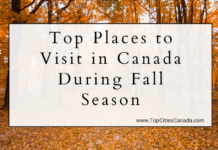Canada offers an array of breathtaking road trips that showcase its diverse landscapes, vibrant cultures, and rich history. Among the most popular routes is the Sea to Sky Highway in British Columbia, which winds through stunning coastal mountains from Vancouver to Whistler, featuring picturesque views and outdoor activities.
The Icefields Parkway connects Banff and Jasper National Parks in Alberta, renowned for its majestic glaciers and wildlife. In Newfoundland and Labrador, the Viking Trail takes travelers through historical sites linked to Norse exploration, leading to stunning coastal scenery.
The Cabot Trail in Nova Scotia is celebrated for its dramatic cliffs and charming fishing villages, while the journey from Montreal to Gaspésie offers a mix of urban experiences and natural beauty along the St. Lawrence River.
Each of these routes provides unique experiences that highlight the incredible beauty and cultural richness of Canada, making them must-visit destinations for road trip enthusiasts.
Top Most Beautiful Road Trips Across Canada
Canada is renowned for its breathtaking landscapes, and road trips are one of the best ways to experience the country’s diverse natural beauty. Here are some of the most beautiful road trips across Canada:
- Sea to Sky Highway, British Columbia
The Sea to Sky Highway, officially known as Highway 99, is a remarkable scenic route in British Columbia, Canada, stretching approximately 134 kilometers (83 miles) from Horseshoe Bay in West Vancouver to Pemberton.
Renowned for its stunning vistas and diverse landscapes, this highway offers travelers breathtaking views of the Pacific Ocean, the Coast Mountains, and lush temperate rainforests.
The highway’s history dates back to before European settlement when Indigenous peoples utilized the area for trade. The modern highway was developed significantly in the mid-20th century, with major construction efforts beginning in the 1950s.
Originally opened as a two-lane road in 1958, it has undergone extensive upgrades, particularly in preparation for the 2010 Winter Olympics, which highlighted its importance as a transportation route between Vancouver and Whistler.
A $775 million renovation improved safety and capacity, transforming it into a more reliable thoroughfare for both locals and tourists.
Scenic Highlights
Traveling along the Sea to Sky Highway provides numerous opportunities for sightseeing and outdoor activities:
- Howe Sound: The highway hugs the eastern shore of Howe Sound, offering stunning views of this fjord-like inlet.
- Lions Bay: A picturesque village that serves as an excellent stop for refreshments and enjoying local scenery.
- Britannia Beach: Home to the Britannia Mine Museum, this area showcases the region’s mining history.
- Shannon Falls Provincial Park: Just south of Squamish, visitors can hike to see one of the tallest waterfalls in British Columbia.
- Squamish: Known as the “Outdoor Recreation Capital of Canada,” Squamish offers rock climbing, mountain biking, and hiking opportunities.
- Whistler: A world-famous ski resort that transforms into a vibrant mountain biking and hiking destination in summer.
Road Conditions and Safety
While the Sea to Sky Highway is celebrated for its beauty, it also presents challenges due to its mountainous terrain and variable weather conditions. Drivers are advised to exercise caution, especially during inclement weather when road conditions can become hazardous.
The highway features several scenic viewpoints where travelers can safely pull over and take in the views.
Activities Along the Route
The Sea to Sky Highway is not just about driving; it offers a plethora of activities:
- Hiking: Numerous trails are accessible from the highway, including those leading to waterfalls and mountain vistas.
- Biking: The route is popular among cyclists, with dedicated lanes in some areas.
- Water Sports: Opportunities for kayaking and paddleboarding are available in Howe Sound.
- Cultural Experiences: Visitors can explore Indigenous culture through various art installations and cultural sites along the route.
The Sea to Sky Highway stands out as one of the most scenic drives globally, combining natural beauty with recreational opportunities. Its blend of ocean views, towering mountains, and rich history makes it a must-see destination for anyone traveling through British Columbia.
Whether you’re an adventure seeker or simply looking to enjoy stunning landscapes, this highway offers an unforgettable experience.
- Icefields Parkway, Alberta
The Icefields Parkway, also known as Highway 93, is a spectacular scenic route that stretches approximately 232 kilometers (144 miles) through the heart of the Canadian Rockies, connecting Jasper National Park to Banff National Park in Alberta.
Renowned for its breathtaking landscapes, this highway is often cited as one of the most beautiful drives in the world, offering travelers an unforgettable experience filled with stunning vistas, abundant wildlife, and numerous outdoor activities.
The origins of the Icefields Parkway date back to the 1930s when it was constructed as part of a relief project during the Great Depression. The road was officially opened in 1961 after extensive improvements and realignments.
Today, it serves as a vital link between two of Canada’s most iconic national parks and is part of a UNESCO World Heritage Site. The parkway has become a major tourist attraction, drawing over 1.2 million visitors annually, particularly during the summer months when its natural beauty is at its peak.
Scenic Highlights
Traveling along the Icefields Parkway offers numerous breathtaking sights and attractions:
- Columbia Icefield: One of the largest icefields in North America, this area is home to several glaciers, including the Athabasca Glacier. Visitors can take guided tours on specialized snow coaches to explore the glacier up close.
- Bow Lake: A stunning turquoise lake surrounded by mountains, Bow Lake is an excellent spot for photography and picnicking. The Bow Glacier Falls hike offers additional views of cascading waterfalls.
- Peyto Lake: Known for its distinctive wolf-head shape, Peyto Lake is best viewed from a lookout point along the parkway. The vibrant blue color of the lake makes it a popular stop for tourists.
- Tangle Falls: This picturesque waterfall is easily accessible from the highway and features multiple tiers that cascade down rocky cliffs.
- Athabasca Falls: Located near Jasper, these powerful falls are a must-see for their impressive volume and unique geological formations.
Wildlife Viewing
The Icefields Parkway is teeming with wildlife, making it an ideal location for animal enthusiasts. Travelers may encounter various species, including elk, deer, mountain goats, and even bears.
The best times for wildlife viewing are early morning or late afternoon when animals are most active. Visitors are advised to maintain a safe distance and respect wildlife regulations while enjoying these encounters.
Outdoor Activities
The parkway provides ample opportunities for outdoor adventures:
- Hiking: Numerous trails along the route cater to various skill levels. Popular hikes include the Valley of the Five Lakes, which features stunning views of five distinct lakes, and trails leading to viewpoints overlooking glaciers and valleys.
- Camping: Several campgrounds are available along the Icefields Parkway, providing a chance to immerse oneself in nature. Reservations are recommended during peak season.
- Winter Sports: In winter, the area transforms into a playground for skiing, snowshoeing, and ice climbing, attracting adventure seekers looking to explore the snowy landscapes.
Travel Tips
- Road Conditions: The Icefields Parkway is well-maintained but can be affected by weather conditions. Travelers should check road conditions before setting out and be prepared for sudden changes in weather.
- Amenities: Services along the parkway are limited; there is only one gas station between Jasper and Lake Louise. It’s advisable to fill up before starting your journey and carry snacks and water.
- Cell Coverage: There is little to no cell service along much of the route; travelers should plan accordingly.
The Icefields Parkway stands as one of Canada’s crown jewels in terms of scenic drives. With its awe-inspiring landscapes, rich history, diverse wildlife, and numerous recreational opportunities, it offers an unparalleled experience for those seeking adventure or simply wishing to soak in some of nature’s most beautiful creations.
Whether you’re driving through in summer or winter, this iconic route promises unforgettable memories amidst the majestic Canadian Rockies.
- Cabot Trail, Nova Scotia
The Cabot Trail is a renowned scenic highway that encircles the northern tip of Cape Breton Island in Nova Scotia, Canada. Spanning approximately 298 kilometers (185 miles), this picturesque route is celebrated for its breathtaking coastal views, rugged landscapes, and rich cultural heritage. It is considered one of the most beautiful drives in the world, attracting tourists from around the globe.
Named after the Italian explorer John Cabot, who is believed to have landed in Atlantic Canada in 1497, the Cabot Trail was developed as part of a tourism initiative in the 1930s.
The route was officially completed in 1932, with the aim of showcasing the natural beauty of Cape Breton Island. The trail passes through the Cape Breton Highlands National Park, established to protect the unique landscapes and ecosystems found in the region.
Scenic Highlights
The Cabot Trail offers numerous breathtaking vistas and attractions along its winding route:
- Cape Breton Highlands National Park: A significant portion of the trail runs through this national park, featuring stunning cliffs, deep valleys, and lush forests. The park is home to diverse wildlife, including moose and black bears.
- Baddeck: This charming village is known as a starting point for many travelers. It is home to the Alexander Graham Bell National Historic Site, where visitors can learn about the inventor’s life and work.
- Chéticamp: An Acadian fishing village rich in culture and history, Chéticamp offers visitors a chance to sample local seafood and explore artisan shops featuring traditional crafts.
- Ingonish: This area boasts beautiful beaches and is a gateway to hiking trails, such as the popular Cape Breton Highlands Skyline Trail, which provides panoramic views of the coastline.
- Pleasant Bay: Known for whale watching opportunities, this quaint village offers boat tours during the summer months to see humpback and minke whales.
- Cape North: The northernmost point on the Cabot Trail, Cape North provides stunning views of both the Atlantic Ocean and Cape Breton Highlands.
Outdoor Activities
The Cabot Trail is not just about scenic driving; it offers a wide array of outdoor activities:
- Hiking: The Cape Breton Highlands National Park features over 26 hiking trails that vary in difficulty. Popular trails include:
- Skyline Trail: A moderately challenging hike that rewards trekkers with breathtaking views of the Gulf of St. Lawrence.
- Franey Trail: A more strenuous option leading to a stunning viewpoint over Clyburn Valley.
- Cycling: The trail is also popular among cyclists, offering challenging terrain with rewarding views.
- Kayaking and Whale Watching: Several operators provide kayaking tours along the coast and whale-watching excursions from Pleasant Bay.
- Cultural Experiences: Visitors can immerse themselves in local culture by attending a céilidh (a traditional Gaelic gathering) at the Gaelic College in St. Ann’s or exploring local music and dance events throughout the area.
Travel Tips
- Best Time to Visit: The ideal time to experience the Cabot Trail is during late spring through early fall (May to October), when weather conditions are favorable for outdoor activities and sightseeing. Fall offers spectacular foliage, making it a popular time for photographers.
- Driving Directions: Travelers can join the Cabot Trail at various points. Starting from Port Hastings at the southern tip allows for either clockwise or counter-clockwise exploration. Driving counter-clockwise places passengers on the ocean side for easier access to viewpoints.
- Accommodations: Numerous lodges, inns, and campgrounds are available along the trail. Reservations are recommended during peak season to secure lodging.
The Cabot Trail stands out as a quintessential Canadian road trip destination, offering a unique blend of natural beauty, cultural richness, and outdoor adventure. Whether you’re driving along its winding roads or stopping to explore its many attractions, this iconic route promises an unforgettable experience filled with stunning landscapes and vibrant local culture.
- Klondike Highway, Yukon
The Klondike Highway is a vital transportation route that connects Skagway, Alaska, to Dawson City, Yukon, traversing through some of the most stunning landscapes in North America.
Spanning approximately 715 kilometers (445 miles), this highway follows the historic paths of gold rush prospectors from the late 19th century, offering travelers a glimpse into the region’s rich history and breathtaking natural beauty.
The Klondike Highway was established in the wake of the Klondike Gold Rush of 1898, which attracted thousands of prospectors seeking fortune in the Yukon Territory. The highway roughly parallels the routes taken by these early gold seekers, notably the White Pass and Chilkoot trails.
The construction of the highway began in 1948 and was completed in 1953, with significant portions opened to traffic by 1978. The road has since evolved from a rugged trail into a well-maintained highway that serves both commercial and tourist traffic.
Route Description
The Klondike Highway can be divided into two main sections:
- South Klondike Highway: This section runs from Skagway to Whitehorse, climbing steeply through the White Pass at an elevation of 1,003 meters (3,292 feet). The highway offers spectacular views of glacial lakes and mountainous terrain as it winds its way through British Columbia before entering Yukon.
- North Klondike Highway: Beginning just north of Whitehorse, this section extends to Dawson City. It passes through historic settlements such as Braeburn, known for its famous cinnamon rolls, and Carmacks, providing access to various outdoor activities and cultural experiences.
Scenic Highlights
Traveling along the Klondike Highway presents numerous opportunities for sightseeing:
- Emerald Lake: Located about 57 kilometers south of Whitehorse, this stunning lake is renowned for its vibrant turquoise color and is a popular stop for photographs.
- Braeburn Lodge: A must-visit for travelers, this lodge is famous for its giant cinnamon rolls and serves as a welcoming pit stop along the route.
- Historic Sites: The highway features several interpretive signs and markers that highlight significant historical events related to the gold rush. Visitors can explore remnants of old mining towns and learn about the hardships faced by early settlers.
- Wildlife Viewing: The region is home to diverse wildlife, including moose, bears, eagles, and caribou. Travelers should keep an eye out for these animals while driving or hiking along the highway.
Outdoor Activities
The Klondike Highway is a gateway to various outdoor adventures:
- Hiking: Numerous trails are accessible from the highway, offering opportunities for hiking amidst stunning landscapes. Popular trails include those leading to viewpoints overlooking rivers and valleys.
- Fishing and Boating: The Yukon River provides excellent fishing opportunities, while boating enthusiasts can explore its waters during warmer months.
- Camping: Several campgrounds are located along the route, allowing visitors to immerse themselves in nature and enjoy stargazing under the clear northern skies.
Travel Tips
- Road Conditions: The Klondike Highway is mostly paved; however, certain sections may be gravel due to ongoing construction or maintenance. Travelers should check road conditions before embarking on their journey.
- Best Time to Visit: The ideal time to travel the Klondike Highway is during late spring through early fall (May to September) when weather conditions are favorable for outdoor activities.
- Accommodations: Various lodging options are available along the route, including hotels, lodges, and campgrounds. Reservations are recommended during peak tourist seasons.
The Klondike Highway is not just a road; it is a journey through history and nature that connects key locations tied to the Klondike Gold Rush.
With its stunning landscapes, rich cultural heritage, and abundant recreational opportunities, this highway offers travelers an unforgettable experience as they traverse one of North America’s most iconic routes.
Whether you’re interested in history, outdoor adventures, or simply enjoying breathtaking views, the Klondike Highway promises an enriching journey through the heart of Yukon.
- Lake Superior Coastline, Ontario
The Lake Superior coastline in Ontario is a stunning expanse characterized by its rugged beauty, diverse ecosystems, and rich cultural history.
As part of the largest freshwater lake in the world by surface area, this region offers a unique blend of natural attractions, outdoor activities, and historical significance.
Lake Superior covers an area of approximately 31,700 square miles (82,100 square kilometers) and is known for its deep blue waters and towering cliffs. It has a maximum depth of 1,332 feet (406 meters) and is surrounded by diverse landscapes that include forests, rocky shorelines, and sandy beaches.
The lake’s watershed encompasses parts of Ontario, Minnesota, Wisconsin, and Michigan, with its northern shores featuring some of the most pristine environments in North America.
Scenic Features
The coastline of Lake Superior in Ontario presents a variety of breathtaking landscapes:
- Rocky Cliffs and Cobblestone Beaches: The north shore is marked by alternating rocky cliffs that rise dramatically from the water’s edge. These cliffs are often interspersed with cobblestone beaches that provide picturesque spots for relaxation and exploration.
- Forested Hills and Ridges: The area is heavily forested, with dense woodlands that support a rich diversity of flora and fauna. The forests are primarily composed of coniferous trees such as spruce and fir, along with deciduous species like maple and birch.
- Waterfalls and Rivers: Numerous rivers flow into Lake Superior along the coastline, creating scenic waterfalls that cascade down the cliffs into the lake. Notable rivers include the Pigeon River, which forms part of the border between Canada and the United States.
Ecological Significance
The Lake Superior coastline is home to a wide variety of plant and animal species. It supports approximately 80 species of fish, including native species such as lake trout and whitefish. The region also hosts unique ecosystems like coastal wild rice beds, which are significant for both wildlife habitat and Indigenous cultural practices.
Birdwatching is particularly rewarding along the shoreline, as migratory birds flock to the area during their seasonal travels. Bald eagles are commonly sighted soaring above the forests and cliffs.
Outdoor Activities
The Lake Superior coastline offers numerous opportunities for outdoor recreation:
- Hiking: There are many trails along the coast that provide access to breathtaking views and natural features. Popular hiking destinations include Pukaskwa National Park, which offers rugged trails through diverse landscapes.
- Kayaking and Canoeing: The calm bays and inlets along the shoreline make for excellent kayaking opportunities. Paddlers can explore sea caves, secluded beaches, and enjoy close encounters with wildlife.
- Fishing: Anglers flock to Lake Superior for its rich fishing opportunities. Species such as lake trout, salmon, and northern pike can be found in its waters.
- Camping: Several campgrounds are located along the coast, allowing visitors to immerse themselves in nature while enjoying stunning views of the lake.
Cultural Heritage
The Lake Superior coastline has a rich cultural history that dates back thousands of years. Indigenous peoples have lived in this region for generations, relying on its resources for sustenance and cultural practices.
Today, visitors can learn about Indigenous history through interpretive centers and cultural programs offered by local communities.
The area also has historical significance related to early European exploration and settlement. The waters of Lake Superior were vital for trade routes during the fur trade era, leading to the establishment of towns along its shores.
The Lake Superior coastline in Ontario is a captivating destination that showcases some of Canada’s most stunning natural beauty. With its combination of rugged cliffs, serene beaches, diverse ecosystems, and rich cultural history, it offers visitors an array of experiences that celebrate both nature and heritage.
Whether exploring its hiking trails or enjoying water activities on the lake, this region promises unforgettable adventures amidst breathtaking scenery.
- Montreal to Gaspésie, Quebec
The journey from Montreal to Gaspésie is a captivating road trip that showcases the stunning natural beauty and cultural richness of Quebec’s eastern region.
Spanning approximately 900 kilometers (560 miles), this route offers a mix of breathtaking coastal views, charming towns, and outdoor adventures, making it a popular choice for travelers seeking to explore one of Quebec’s lesser-known gems.
Route Overview
Traveling from Montreal to Gaspésie can be accomplished in various ways, but the most scenic and enjoyable option is by car. The drive typically takes about 8 to 10 hours without extended stops, but many travelers opt for a more leisurely pace to fully appreciate the sights along the way.
- Primary Route: The most direct route is via Autoroute 20 (A-20), which connects Montreal to Quebec City before continuing towards Gaspésie. For a more scenic experience, consider taking Route 132, which hugs the coastline and offers picturesque views of the St. Lawrence River.
Suggested Itinerary
To make the most of this road trip, consider breaking it into several days with overnight stops. Here’s a suggested itinerary:
Day 1: Montreal to Quebec City
- Distance: Approximately 250 km (155 miles)
- Highlights:
- Explore the historic district of Old Quebec, a UNESCO World Heritage site known for its European charm.
- Visit landmarks such as Château Frontenac and the Plains of Abraham.
- Enjoy local cuisine at one of the many bistros or cafes.
Day 2: Quebec City to Gaspésie National Park
- Distance: Approximately 400 km (250 miles)
- Highlights:
- Stop at Montmagny for views of the St. Lawrence River.
- Visit Rivière-du-Loup, known for its scenic landscapes and whale watching tours.
- Arrive at Gaspésie National Park, where you can hike trails like Mont-Jacques-Cartier for stunning mountain vistas.
Day 3: Explore Gaspésie
- Spend the day exploring Gaspésie National Park, enjoying activities such as hiking, wildlife viewing, and photography.
- Consider visiting nearby attractions like Percé Rock, an iconic natural landmark, and Île Bonaventure, known for its bird sanctuary.
Scenic Highlights Along the Route
- Chemin du Roy: For those seeking a historic route, Chemin du Roy offers a charming drive along the northern shore of the St. Lawrence River with quaint villages and beautiful landscapes.
- Gaspé Peninsula: The peninsula is famous for its dramatic cliffs, coastal views, and vibrant fishing communities. Key stops include:
- Percé: Known for its stunning rock formation and vibrant arts scene.
- Forillon National Park: Offers hiking trails with breathtaking views of cliffs and marine life.
- Matane: A great place to stop for local seafood; try fresh catches at local restaurants.
- Carleton-sur-Mer: A picturesque coastal town perfect for relaxing by the beach or enjoying water sports.
Cultural Experiences
The Gaspésie region is rich in culture and history. Visitors can immerse themselves in local traditions by exploring:
- Acadian Culture: Learn about the Acadian heritage through local festivals, music, and cuisine.
- Indigenous History: Engage with Indigenous communities to understand their connection to the land and culture.
Travel Tips
- Best Time to Visit: The ideal time for this road trip is late spring through early fall (May to October) when weather conditions are favorable for outdoor activities and sightseeing. Fall also offers stunning foliage.
- Accommodations: Various lodging options are available along the route, including hotels, inns, and campgrounds. Reservations are recommended during peak tourist seasons.
- Local Cuisine: Be sure to indulge in local specialties such as seafood (especially lobster), poutine, and traditional Acadian dishes.
The journey from Montreal to Gaspésie is more than just a road trip; it’s an adventure through some of Quebec’s most breathtaking landscapes and rich cultural experiences.
With its combination of scenic beauty, outdoor activities, and charming towns, this route promises an unforgettable experience that highlights the best of eastern Canada.
Whether you’re hiking in national parks or savoring local delicacies by the coast, Gaspésie offers something special for every traveler.
- Viking Trail, Newfoundland and Labrador
The Viking Trail is a captivating 489-kilometer (about 303 miles) scenic route that stretches from Deer Lake in the south to St. Anthony in the north of Newfoundland and Labrador, Canada.
This iconic road trip offers travelers a unique opportunity to explore the rich history of the Vikings, stunning natural landscapes, and vibrant local culture, making it one of the most remarkable journeys in Canada.
The Viking Trail is steeped in history, particularly related to the Norse exploration of North America.
Around the year 1000 AD, Norse explorers, believed to be led by Leif Erikson, established a settlement at l’Anse aux Meadows, marking it as the first known European presence in North America long before Columbus’s voyages.
This site was discovered in 1960 and is now a UNESCO World Heritage Site, showcasing the remnants of Viking structures and artifacts that provide insight into their way of life.
Route Overview
The Viking Trail can be divided into several key segments, each offering unique attractions and experiences:
- Deer Lake to Gros Morne National Park
- Distance: Approximately 30 km (19 miles)
- Highlights:
- Gros Morne National Park: A UNESCO World Heritage Site known for its dramatic landscapes, including fjords, mountains, and coastal cliffs. Visitors can hike trails like the Gros Morne Mountain trail or explore the picturesque town of Woody Point.
- Lobster Cove Head Lighthouse: Located near Rocky Harbour, this historic lighthouse offers stunning views of the coastline and has a small museum detailing its maritime history.
- Rocky Harbour to Cow Head
- Distance: Approximately 35 km (22 miles)
- Highlights:
- The scenic drive through this area features beautiful coastal views and opportunities for whale watching.
- Cow Head: Home to the Shallow Bay Beach, a lovely spot for relaxation and enjoying nature.
- Cow Head to Port au Choix
- Distance: Approximately 90 km (56 miles)
- Highlights:
- The town of Port au Choix is significant for its archaeological sites that reveal evidence of Indigenous peoples and early European settlers.
- Visit the Port au Choix National Historic Site, which showcases ancient burial grounds and artifacts from both Indigenous cultures and Viking settlers.
- Port au Choix to St. Anthony
- Distance: Approximately 130 km (81 miles)
- Highlights:
- As you continue northward, enjoy breathtaking views of the coastline along Iceberg Alley.
- Arrive at l’Anse aux Meadows, where you can explore reconstructed Viking sod huts and learn about Norse history at the Interpretive Centre.
Key Attractions Along the Viking Trail
- l’Anse aux Meadows: This historic site is a must-visit for anyone traveling along the Viking Trail. The remains of Viking structures provide a glimpse into their settlement patterns and daily life.
- St. Anthony: Known as “The Iceberg Capital of the World,” this charming town offers stunning views of icebergs during their migration season from mid-May to mid-June.
- Norstead Viking Village: Located near St. Anthony, this living history museum features interactive exhibits that allow visitors to engage with Viking culture through crafts, demonstrations, and storytelling.
Natural Beauty
The Viking Trail is renowned for its breathtaking natural scenery:
- The route hugs the rugged coastline of Newfoundland, offering panoramic views of cliffs, bays, and ocean vistas.
- Wildlife enthusiasts can spot various species such as moose, caribou, and numerous seabirds along the route.
- The landscape features diverse ecosystems ranging from coastal wetlands to boreal forests.
Best Time to Visit
The ideal time for a road trip along the Viking Trail is during late spring through early fall (May to September). For those wishing to see icebergs, plan your visit between mid-May and mid-June when they are most prevalent along Iceberg Alley. Fall also offers stunning foliage but may bring cooler temperatures.
Travel Tips
- Accommodations: Various lodging options are available along the route, including hotels, inns, and campgrounds. Reservations are recommended during peak tourist seasons.
- Road Conditions: The highway is generally well-maintained; however, travelers should be cautious during adverse weather conditions common in Newfoundland.
- Cultural Experiences: Engage with local communities to learn about their traditions and enjoy regional cuisine featuring fresh seafood and local specialties.
The Viking Trail in Newfoundland and Labrador is more than just a scenic drive; it is a journey through history that connects visitors with the ancient Norse explorers who first set foot on North American soil.
With its combination of rich cultural heritage, stunning landscapes, and outdoor adventures, this route promises an unforgettable experience for travelers seeking to explore one of Canada’s most unique regions.
Whether you’re hiking in Gros Morne National Park or marveling at icebergs off St. Anthony’s coast, the Viking Trail offers something special for everyone.
These road trips not only offer stunning views but also provide a glimpse into Canada’s rich history and culture. Whether you’re seeking mountains, coastlines, or unique cultural experiences, these routes are sure to leave lasting memories.










